At the Munich Games, my racing flats had been custom-made by the top designer from Adidas, the German shoe company that then dominated the athletic-shoe market. Those shoes had fit so perfectly, I wasn’t even aware of them as I made my surge at the Nymphenburg Palace and glided through the English Garden on the way to the stadium: the highest compliment you could pay a pair of shoes. But I had faith that Nike could make just as good a shoe, because Bill Bowerman had done so for Pre and Kenny Moore and other Oregon runners …
Copio-incollo l’intero estratto dal libro di Frank Shorter 27’000 battute centrate sullo sconosciuto avversario nella maratona olimpica di Montreal 1976, anche allora pioveva: note storiche e un incidente (finito bene) per il marchio dominatore in giallo-fluo-fucsia di Rio 2016 e monopolizzatore del podio con Kipchoge KEN – Lilesa ETH – Rupp USA (ph. Giancarlo Colombo).
I spent the entire summer of 1976 in Boulder, Colorado. It was the summer of the American bicentennial, the summer when Jimmy Carter was running for president against Gerald Ford, who had succeeded the disgraced Richard Nixon. The order was rapidly fading, as Bob Dylan had sung in the 1960s, but except for shaving off my mustache, I followed the same routine as in my buildup to the ’72 Games. Due to a nagging, troublesome injury I’d suffered in February to my navicular bone, near the point where the foot and ankle meet, I wasn’t able to train quite as hard; I realized I needed to dole out my energy and time carefully. My tactics would be the same as in Munich: Go out with the lead pack, throw a midrace surge, and hold on. No secrets or surprises this time. The other runners would know what was coming, but it shouldn’t make a difference. If another challenger were out there in the international marathon scene, he would have shown himself by now. I truly felt that Bill Rodgers was my main competition, but due to his hamstring injury, he wouldn’t be on top of his game in Montreal. Once again, I felt I was capable of finishing in the top three. I was confident that I’d be ready to do my best when it mattered most.
The Games began in late July. A week or so before the opening ceremony, my wife, Louise, and I drove to the Olympic team assembly area in Plattsburgh, New York. We visited relatives on my mother’s side of the family in Canton, New York, and then drove north across the border. The nation of Canada and the province of Quebec had invested heavily in hosting the Olympics, building a new stadium, hoping to show its best to the world in the way Munich had tried to show its best at those ill-fated 1972 Games. But times had changed, and the world was a colder place. The modern Olympic movement had lost its last vestiges of innocence after the Munich Massacre, in which terrorists took the lives of 11 athletes.
We have never quite recovered from Munich, and we’ll never likely regain the energy and idealism that, despite lapses and excesses, defined the Olympic movement from 1896 until the moment the Black September killers climbed over the fence in the Olympic Village. Not all of the changes were negative—it didn’t hurt that a strain of professionalism now ran through the Games and that athletes from the West could now train with a modicum of security and comfort, leveling the playing field somewhat with the state-supported Eastern Bloc performers. But in general there was a new air of cynicism and exploitation; athletes were no longer free agents. We felt like pawns being moved around by the masters of war, or, to mix metaphors, like ships being blown across uncharted waters by the winds of cold war geopolitics.
From the perspective of an American distance runner, the Montreal Games presented an especially mixed bag. Due to the geopolitics, the East African runners would be absent; their nations were boycotting the Games to protest the apartheid regime of South Africa and the general phenomenon of colonialism that had blighted the developing world. On the other hand, the Soviet and Eastern Bloc athletes would be out in force, minions of the anabolic-fueled propaganda machine and the medal-count arms race. The Western European and antipodal runners were always strong. And America in general was suffering the effects of the post-Vietnam, post-’60s malaise and hangover. We had lost a measure of confidence in ourselves, grown ambivalent about our power, and our Olympic team reflected this slide. Our traditionally dominant track-and-field team had only a few clear gold medal favorites: Edwin Moses, a 400-meter hurdler; the decathlete Bruce Jenner; discus-thrower Mac Wilkins; and myself.
And now, of course, I could no longer slip in and out of the athletes’ village, anonymously riding the metro. I was the defending Olympic Marathon champion. My photo had appeared on national magazine covers, and in 1972 I had won the prestigious Sullivan Award, which goes to the year’s outstanding American amateur athlete. My previously arcane discipline, the marathon, had sprouted into a trend, a movement, a sport, and a pastime, and I had emerged as one of the movement’s role models. Across the nation, thousands of ordinary citizens now trained virtually as hard as I did. Both from a spectator and participant perspective, the marathon was no longer a virgin, unexplored continent. Similar to Munich’s Olympic Marathon, where I ran with a figurative bull’s-eye on my back, I now ran as a target that the public and my competitors could key on.
I preferred anonymity and found it at an inn rented by Nike just outside Montreal. The company’s Geoff Hollister hosted Louise and me. I also had a room at the Olympic village, which turned out to be fortunate. Louise stayed mostly at the inn, while I spent most nights in my room in the village. But I would visit her frequently, training on the roads near the inn. Still, the attention wasn’t altogether a bad thing. I could deploy it as a psychological advantage. I knew my opponents were watching me, just as those Eastern Bloc runners had been watching back in Fukuoka in 1971, when I stepped off the bus during the course tour and ran those hard kilometers back to the hotel. Now, in Montreal, I did not use public transportation, but Louise drove me to Mount Royal, a tall hill jutting out mid-course (technically you weren’t supposed to have steep inclines on an Olympic Marathon course; we suspected that organizers had inserted the hill because Jerome Drayton, the Canadian hope for a medal in the event, was strong on the hills). I ran my 5K time trial over the mountain, hitting my splits, in dress rehearsal for the surge I’d deliver during the actual race. I didn’t care if my competitors knew what was coming. If they could respond to it, more power to them. Meanwhile, my time trial at Mount Royal gave them something to think about.
Due to my standing in the sport and the fact that I’d decided not to run the 10,000 meters event, ABC invited me to provide commentary for its coverage. Lasse Viren won as expected; again, the graceful, lithe Finn flashed across the line, looking more like a rocker than a jock, prevailing in a contemplative individual sport in which you competed more against yourself than other runners or the clock. I wasn’t about to say anything about the shadow of blood-doping hanging over Viren or disabuse fans in their hope that an alternative sort of sports hero had emerged. Indeed, I had also been placed in this alternative camp—even though my greatest pleasure was cleaning the clock of Harvard rivals in the smelly dark IC4A field houses of the cold Northeast.
During a commercial break I turned to Erich Segal, my old Yale prof, who had returned to the broadcast booth after his uproarious stint at the Munich Games. That pale guy running in the pack, holding a strong pace, could be a good marathoner, I suggested, and briefly wondered if he’d be doubling in the 10 and the Marathon here in Montreal. We looked him up in the program. His name was Carlos Lopes, and he ran for Portugal.
July 31, 1976. The morning of my second Olympic Marathon. Four years earlier, on September 10, 1972, despite the cataclysm of the Munich Massacre and the fact that I was a virtual unknown sleeping on the concrete floor of a dorm-room balcony, I had woken up knowing I was in rhythm, that I was getting something right. Today, in Montreal, I tried to tell myself the same thing. I tried to take confidence in my additional four years of purposeful, thoughtful training, in my string of marathon and track victories around the globe, in my worldwide number one ranking in the marathon, and my successful time trial over Mount Royal just a few days earlier, but I knew that something was off. I wasn’t quite in sync. I sensed that even though I’d prepared to my utmost, I had fallen a centimeter out of step with the marathon gods, the forces beyond my control. But that’s why you run your hardest workouts on the day they are scheduled, even if you’re feeling terrible. Dealing with feeling less than my best on race day was also something I’d practiced.
I followed my ritual and routine: the prerace meal of toast, fruit, and coffee; the calm trip over to the Olympic stadium. Such was my focus that I didn’t even notice the gray skies and the humid drape of rain showers. I went into the holding area with Bill Rodgers, Don Kardong, and the other runners, sensing them giving me appraising glances. I arranged the items in my gear bag, preparing to go out to the fenced-off area where we could complete our final warmup.
Everything was in order, but for some reason I decided to break with my usual practice and put on my Nike racing flats before heading out to the track; in my previous marathons, I would wait until moments before the starting gun to lace up my racing shoes. It wasn’t a conscious decision to change my routine, and for a moment I considered changing back to my trainers. But that seemed overly fussy; I wasn’t superstitiously committed to an exact sequence of preparation. I depended on routine, but I wasn’t weird about it. That seemingly inconsequential break in my ritual, however, turned out to be crucial.
To review my arrangement with Nike: I was the second high-profile competitive runner to wear the company’s shoes. The first was Steve Prefontaine, who inspired Phil Knight (who had also run for Bill Bowerman at the University of Oregon) to grow Nike, originally known as Blue Ribbon Sports, from a small-time niche enterprise selling Japanese shoes at high school track meets into a legitimate business with an exotic, resonant brand name.
My deal with Nike was a straightforward proposition. The company execs wanted me to wear a pair of Nike racing flats during my Olympic Marathon. The Nike swoosh was in its infancy, and my displaying it to a global TV audience would help raise brand awareness. Of course, the shoe was the one indispensable piece of equipment that any runner employed. At the Munich Games, my racing flats had been custom-made by the top designer from Adidas, the German shoe company that then dominated the athletic-shoe market. Those shoes had fit so perfectly, I wasn’t even aware of them as I made my surge at the Nymphenburg Palace and glided through the English Garden on the way to the stadium: the highest compliment you could pay a pair of shoes.
But I had faith that Nike could make just as good a shoe, because Bill Bowerman had done so for Pre and Kenny Moore and other Oregon runners.
I ran in the racing flats a couple of times in the days before the race and took them to the starting line at the stadium. The shoes felt fine. Geoff Hollister had designed them himself with my input and approval. Our goal and shared focus (too narrow a focus, as it turned out) was to produce the lightest pair of racing flats in history. Geoff found an extremely light but strong mesh material that had never been used before on performance athletic shoes. I wanted the lightest possible shoes in order to gain a psychological edge and agreed to give the prototype design a try. Looking back, it seems an unwise decision, because only days remained before the race.
Neither Geoff nor I thought the material would perform differently when glued to the sole of the shoe. For some reason, however, the same glue that bonded so reliably in all makes and models of training and racing shoes failed in these superlight, custom-made flats.
Although I had no reason to doubt the shoes, I had practiced the due diligence of an Olympic runner. Just in case there was an unforeseen problem with the Nike prototypes, I had arranged for a backup pair of racing flats to be shipped from Boulder to Montreal (those shoes were manufactured by another company; I have very narrow feet and Nike’s production-line racing flats were too wide for me to race in properly). However, I left the backup pair in my room in the athletes’ village because the prototype shoes so skillfully designed by Geoff had worked fine during several training runs I’d logged over the previous few days. Indeed, since Phil Knight and I had shaken hands on our deal earlier that year, I had worn nothing but Nike shoes.
Just before the start of the Marathon, in the warmup area outside the stadium, I jogged back and forth in my racing flats. The shoes felt different; they felt strangely loose. I retied and tightened the laces but they still felt loose. I looked down and saw that the sole of the right shoe had separated from the upper and my bare sole was open to the air. The shoe had fallen apart.
Instead of feeling panic, I immediately thought of what my options might be. Was there time to rush back to my room at the athletes’ village and return with my backup racing flats? That didn’t seem possible—there was now less than half an hour until the starting gun.
You know that nightmare, the one in which you’re trying to get someplace crucially important but you lack the crucially important element—a pair of pants, a set of keys—necessary to complete the mission? Well, in the moments before the 1976 Olympic Marathon, I was living out this nightmare. But I couldn’t wake up and have it go away.
It was a crisis, and yet I felt strangely calm. I didn’t know how it would happen, but I knew I was going to make it. I looked down again at the ripped and flapping shoe, then looked up to see a man—or was it an angel?—standing on the other side of the chain-link fence separating the warmup area from the stadium concourse; since Munich, Olympic security had improved significantly. I recognized him—it was Bruce MacDonald, a U.S. race-walking coach, who happened to be staying in the same suite of rooms in the village as I was. Bruce would have a key to get in my room!
I rushed over to the fence and explained my predicament. Bruce, bless his heart, booked away at a dead sprint to retrieve my backup racing flats. I waited in the warmup area. Instead of cursing my bad luck, I reverted to my default mode of dealing with stress: movement. I jogged back and forth in my training shoes. For some reason, I remained calm. I felt confident that this would work out.
Finally, after all the other runners had gone into the stadium and I was alone in the warmup area, I was visited by a wondrous sight: Bruce skidding to a stop and chucking my backup pair of racing flats over the chain-link fence. There was now less than 5 minutes until the starting gun. I laced up the flats, ran out onto the track and across the infield, and took my place on the starting line, as if nothing untoward had transpired.
Looking back at that moment, I might have felt that fate was messing with me—that the skein of unfavorable signs beginning with Pre’s death the year before and encompassing my ankle injury and the specter of blood-doping was continuing. I might well have thought that something was amiss; that, in contrast to my experience at Munich ’72, when all the breaks fell my way, I wasn’t quite in rhythm.
But I didn’t feel that way. I can truthfully say that I remained confident and focused on the job at hand. Just as I had learned to run fast when I was tired, I had learned to go hard on bad days, when I was feeling weary or off-kilter. Again, it was back to the fundamentals of the sport: Work through the finish. Don’t change your plan due to unfavorable interior or exterior weather. And only now, as the gun cracked, as I shot to the front and claimed the inside lane to save me a few meters, as we circled the track once before exiting the arena to the streets of Montreal, did I take note of the actual weather. A steady drizzle spattered the surface of the inside lane. The roof of the gleaming new stadium, soon to be resented by the people of Quebec as its costs accrued a mountain of crushing public debt, sheltered the outside lanes. The crowd cheered lustily as we exited the arena. It was the final day of track-and-field competition.
Following my custom, I ran hard through the early miles, setting an honest pace, part of a lead group of nine or 10 athletes that quickly separated from the rest of the pack. Bill Rodgers and Don Kardong were among the leaders, and so was Lasse Viren, running his first marathon, attempting to repeat the feat of Emil Zátopek, who at the 1952 Games won gold medals in all three endurance events, the 5,000, the 10,000, and the marathon. Viren had just won the 5 yesterday, so a win today didn’t seem feasible, but the women of the East German swim team, breaking record after record, had proved that, through better chemistry, anything was possible.
As the miles accrued, I felt more and more like myself, more and more confident that my training would bear out and my battle-tested plan would again yield fruit. We clipped along at well under a five-minute pace, passing the first 10 kilometers in under 30 minutes. That was a world-record pace, but we couldn’t maintain that over the second half of the course, which carried over Mount Royal, where I would launch my surge.
The other runners knew what was coming, but could they do anything about it? No other marathoner could approach my 10K speed, except for Viren. I had a great deal of respect for Bill Rodgers. I knew back in ’75 after his first Boston Marathon victory, that he was legitimate. Temperamentally, Bill and I were opposites, as he often seemed out of focus. And while I knew that if healthy, Bill would be vying for gold, he was nursing that sore hamstring, and I suspected he would eventually fade.
I had my own injury to contend with. My foot seemed to be holding up (and so were my replacement pair of racing flats), as the lead pack probed into the back nine of the course. I don’t remember the rain as a factor. I looked over at Bill. He normally ran with a beautiful lilting light-footed stride, but today he wasn’t flowing. I knew he was struggling. And how about Viren? The entire race he’d been shadowing me, keying off me, never stepping up and sharing the lead in the manner of Kenny Moore or Jack Bacheler or another honorable marathoner. So I started to mess with him, veering in and out at the water stops, using the other guys as a screen, hiding from Viren, whose head would snap around in alarm and confusion until he finally found me. I felt good about that.
As we approached mile 14, the take-off point for my surge, that’s how the dynamic of the lead pack played out. I was running my own race, but I was aware of my rivals, tracking them in the manner that a radar operator traces the presence of ships sailing in the vicinity. They weren’t an immediate threat; they only posed a danger if I lost sight of them. I briefly thought of Carlos Lopes, the Portuguese runner I had noticed in the 10,000 meters. He wasn’t among the lead pack. All seemed in order. At my appointed spot at the base of Mount Royal, I launched my surge.
I threw down a 4:40 mile, spurting away from Bill and the rest of the lead pack, except for one man, a pale runner who looked a lot like Lopes, but I couldn’t be sure. From the moment I first noticed him, I felt puzzled. At that point of a marathon, no one is fresh. You look for fatigue, but this runner showed no weariness. He flew up on my shoulder like the bad guy in a movie car chase. And there this fellow stayed, demonstrating continued odd behavior for an elite marathoner.
He displayed no trace of his own pacing or effort or strategy. When I accelerated, he did the same. When I slowed for a few strides, he also slowed. I tried to sandbag him, slowing the pace just a hair for about a quarter mile, conveying the impression that I was tiring, and then blasting away at a near-sprint for several hundred yards. The mystery man—by now I was sure it must be Lopes—easily covered every move. It was as if invisible bands held us together. This was the shadowing tactic that Viren had attempted earlier in the race, but this guy was pulling it off.
And then, as we came down off Mount Royal in a steady summer drizzle, this mystery man stepped to the lead, opening a 10-meter gap. I answered that move, pulling back up on his shoulder, but again he took off on me. This cycle repeated three more times as the course swerved through the campus of McGill University in central Montreal. We passed the 20-mile mark, the event’s notorious “wall,” where the glycogen stores tap out and most marathoners, especially inexperienced ones, start to wobble and unravel. But instead of coming apart, this guy was getting stronger.
It was just the two of us, running far out in front of the rest of the pack. This was where I expected to be at this point; I was running precisely according to my plan, but I wasn’t expecting company and certainly not the company of a stranger. The elite international running community wasn’t that big—you knew all the significant players, at least by reputation. But my current opponent was a complete unknown. This wasn’t normal; something wasn’t right. Fate appeared to be messing with me again.
We went through one more hare-and-hound cycle, and then, at mile 23, the guy just powered away from me, and there was nothing I could do about it. He quickly opened a 100-meter lead, well beyond the imaginary thread by which you can hope to keep contact. We made a left turn onto the boulevard leading to the finish just as dusk started to close. I put my head down and summoned one last spurt of energy. My kick shaved perhaps 40 meters off of his lead, enough to give me some faint hope. But then, sensing my late rally, the guy glanced back over his shoulder. For an instant our eyes met. And then—I’ll never forget this—he turned around and just soared away. Pick your simile—like a booster rocket—or your metaphor: He found another gear. I realized that I was beaten. I had executed my race plan, and my tender ankle had held up. Today, apparently, a better man was winning.
My opponent crossed the finish line 48 seconds ahead of me, just as I entered the tunnel leading into the stadium. Oddly, I heard the roar of the crowd at almost the exact same moment that, four years earlier, I had heard the crowd roar in Munich, when an impostor crossed the marathon finish line ahead of me. And as I entered the stadium in Montreal, I encountered a strange tumult resembling that finish-line debacle in Munich, where it took a few minutes to expose the impostor and acknowledge my victory. Here in Montreal, the race was over, the mystery man had won the gold medal, but he was still running. It wasn’t a victory lap. The guy was booking. He was slamming around the track as if he were finishing an 800-meter race rather than one spanning more than 26 miles. And he wasn’t making an emotional statement in the manner of John Akii-Bua, the Ugandan athlete who, after crossing the line and winning the 400-meter hurdles at the Munich Games, continued running full-tilt, clearing two more hurdles out of sheer innocent joy, seeming to personify the energy coming out of the newly sovereign African nations. No. My victorious opponent was still running like a hellhound ripped from its chain. It seemed that he had misjudged the finish and thought one more lap remained in his race.
I finished my marathon in 2:10:45, almost 2 minutes faster than my time in Munich. I laced my hands behind my head and looked up at the clock. I couldn’t have run any harder. That’s it, I thought. I gave it all I had. I wasn’t crushed. I wasn’t really disappointed; I was puzzled. Finally, a full minute later, Karel Lismont and Don Kardong came into the stadium, fighting it out for the bronze; Lismont, the Belgian, won. I approached the man I still assumed to be Carlos Lopes to congratulate him on his brilliant race. As I shook his hand and got a good look at him, I realized that he wasn’t Lopes. Confused, I looked up at the scoreboard, which announced that the winner was a man named Waldemar Cierpinski, competing for East Germany.
After the race I drifted around in a mildly shocked daze. I went through the drug testing protocol and stood gamely on the silver medal podium as the stern proletarian East German national anthem played. (The medal standings indeed ended disappointingly for the U.S. track-and-field team, with only four individual gold medals for male American athletes, a distinct comedown after decades of dominance.) I did an interview with ABC, in which I voiced the usual commentary, giving Cierpinski his seeming due, telling my countrymen, hey, it happens, somebody ran faster today, but even as I went through these motions I was calculating the probabilities.
Something wasn’t right about this. I kept seeing all those massive-shouldered East German female swimmers who’d been racking up world-record, gold medal–winning performances more profusely than Mark Spitz had in Munich; I kept seeing Waldemar Cierpinski looking back over his shoulder at me, then taking off as if he’d been shot from a cannon. A quick check on the guy’s résumé yielded suspicious info: a string of mediocre marathons, followed by one comparatively quick one the previous May, but no evidence of the extensive apprenticeship required of an honest world-class marathoner.
But there was no solid evidence that the East German team was doing something underhanded. There was nothing I could say, nothing I could do. I left the stadium and met Louise. We broke camp in Montreal and drove in thoughtful silence to her cousin’s house in Canton, New York. I remember the car—a Fiat sedan. I needed to process and reframe the Olympic Marathon, evaluate it so I could move forward. I knew what had happened. Something of high value had been stolen, not just from me but from runners like Pre and Kenny Moore and Jack Bacheler and George Bowman back at Mount Hermon School near the Berkshire Mountains of western Massachusetts; from every honest athlete who knew the searing pain of that penultimate 800-meter interval and honorably shared the burden of setting the pace.
Juicing made a mockery out of that pain and sacrifice. The state-sponsored East German doping system had cheated honest athletes out of the striving that gave our lives meaning. I knew what it was like to win honestly, to fight it out with yourself. I was powerless to declare the truth. I had no proof of any crime, and even if I did have proof, the criminals could twist and obfuscate it. Out in the world, no one would have a reason or incentive to countenance my story.
On the plus side, I was proud of making it through the marathon while dealing with my foot injury. In Munich I had shown that I could run well when everything was falling my way. In Montreal I had proved that I could run well when the gods frowned on me. I was 28 years old and still in my prime.
Meanwhile, the paradigm was shifting, both for ill and for good. This dark thing, this shadow of cheating, had infiltrated the sport, but it was now becoming feasible to earn a living as a professional runner. And part of being a professional—maybe the heart of the vocation—was learning how to lose. No matter how thoroughly you plan and train, no matter how much pain you’re willing to absorb—and even for the cheaters, no matter how diabolically powerful your drugs—you will always, ineluctably, lose more than you win.

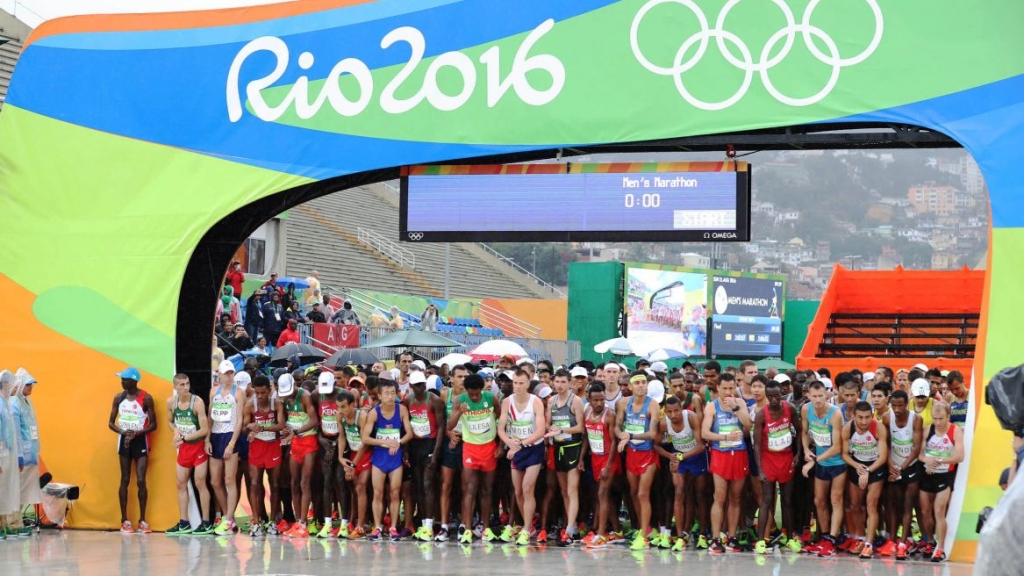

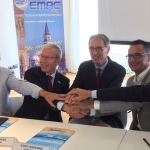
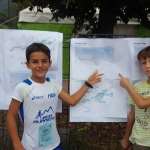
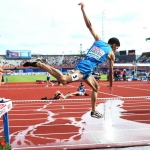
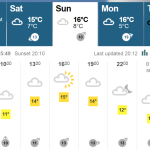
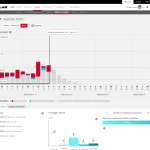

Leave A Comment